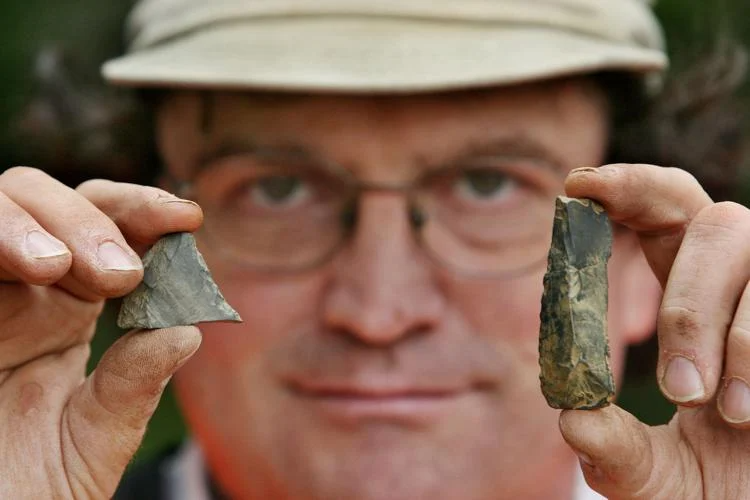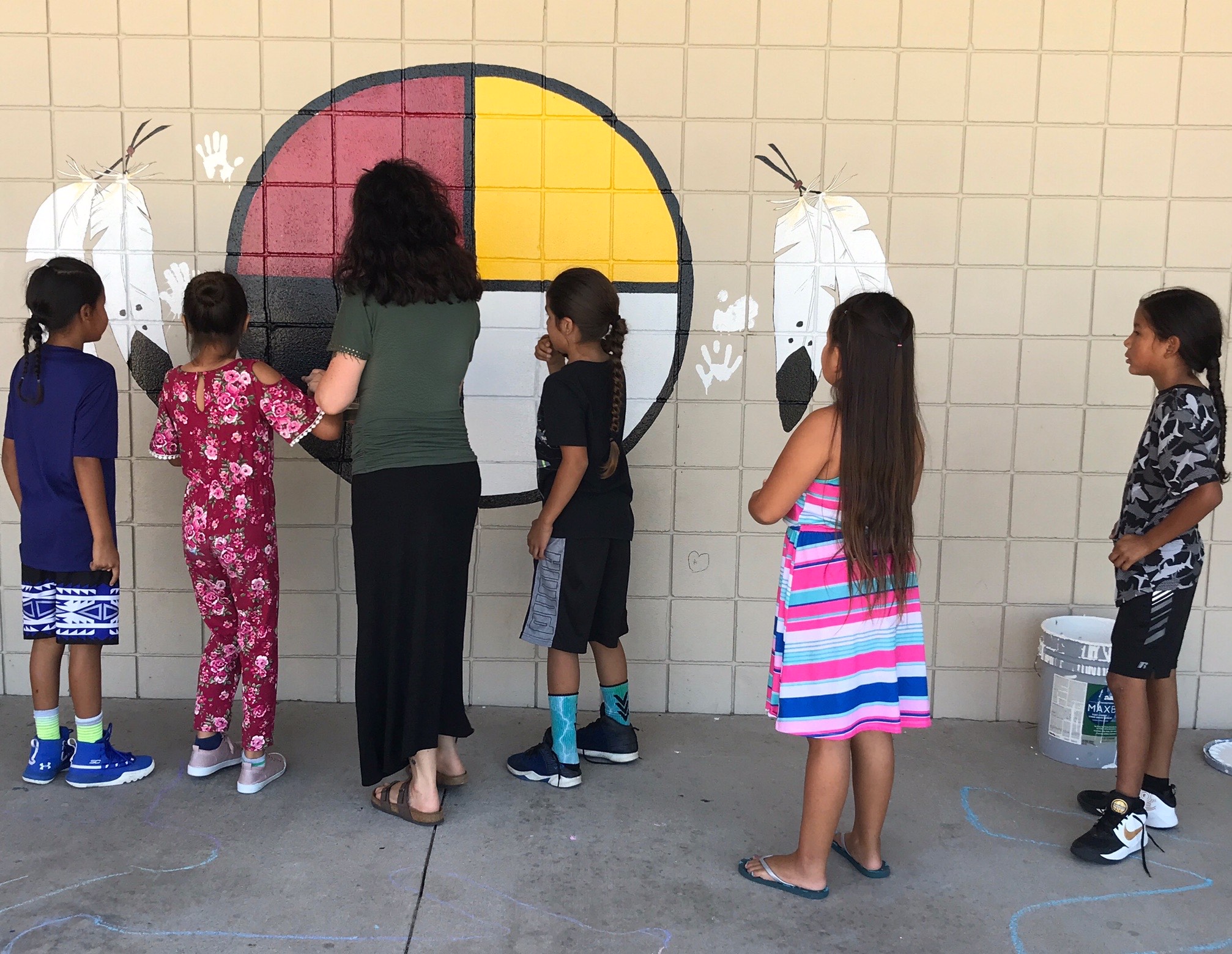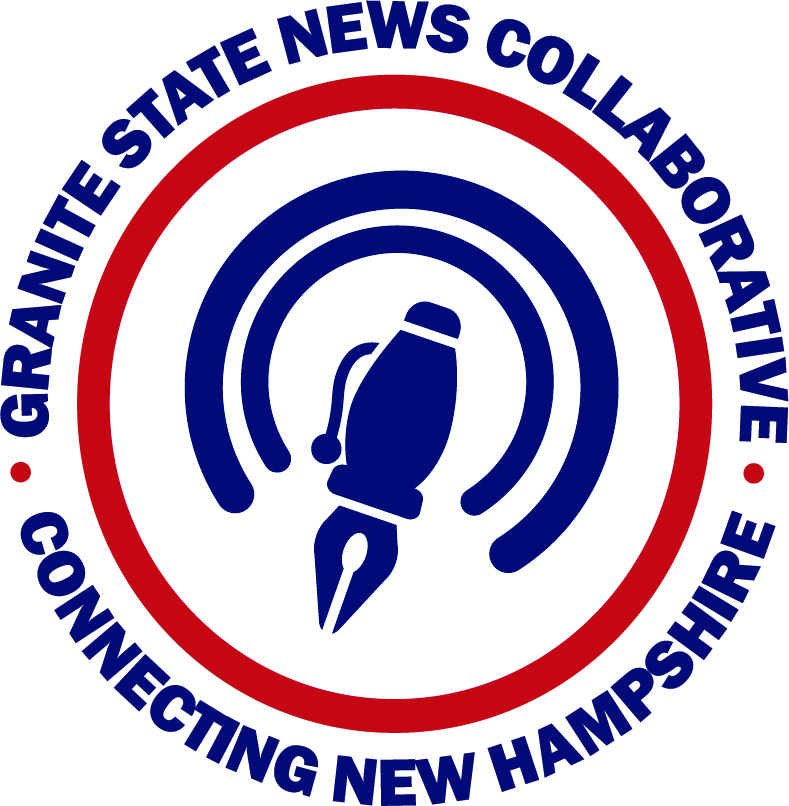]
Click the link to watch the full interview on NH PBS’s The State We’re In.
This story is the first in the ‘We have always been here’ series that will examine where New Hampshire stands when it comes to acknowledgment of and support for its indigenous people, what steps other New England states have taken and what Abenaki people in the state have done on their own to build awareness of their heritage and contributions to the state.

Anne Jennison is constantly referred to as if she isn’t here anymore. An indigenous resident of New Hampshire, Jennison said people default to talking about the Abenaki in the past, a habit that speaks to a long, dark history.
“Except for indigenous people themselves, they are almost invariably referred to in the past tense — like a great big rubber eraser literally has taken the history,” she said.

And yet, Native Americans are – and always have been – part of New Hampshire. Archeological evidence shows that native people have been living in New Hampshire for more than 13,000 years. Today, about 4,000 Granite Staters, 0.3 percent of the state’s population, identify as Native American. Many people feel that it’s time to more widely recognize Native Americans in New Hampshire, both past and present.
Ignoring Native Americans in New Hampshire perpetuates the sense of erasure that Native American residents of New Hampshire feel.
“There was just a concerted effort to wipe out the Native American population in New England,” said Jennison, who is the chair of the state’s Commission for Native American Affairs. “There are still concerted efforts to say there are no Native people in New Hampshire anymore, which is ridiculous. There are, regardless of whether or not they’re Abenaki.”
A long history, forced underground
For centuries, New Hampshire was home to the Abenaki, a group of Native Americans who lived in Vermont, New Hampshire, Maine and southern Canada. In New Hampshire, the Abenaki would typically move from season to season, traversing back and forth across the Connecticut River, depending on where different resources were available, said Robert Goodby, an anthropology professor at Franklin Pierce University
English settlers didn’t understand that pattern, leading to modern-day misunderstandings that Native people never truly lived in New Hampshire and were just “passing through,” he said.
“But the archaeological work has shown they would come to the same places, say, every spring. We have a fishing site in Swanzey, where we have evidence of 4,000 years of continuous visits, and at the Amoskeag falls in Manchester there is evidence for 8,000 years of continuous springtime fishing visits,” Goodby said. “There was a permanent presence, because these folks kept coming back to these places.”

When European colonists arrived, they brought genocide, disease, warfare and scalp bounties. Then came the American Indian Removal Act of 1830, which forced Native Americans to move west of the Mississippi, off their homelands, said Jennison. Abenaki that remained in New Hampshire assimilated because their lives depended on it.
“Especially in the Northeast, we were driven underground during the extermination attempts, the scalping bounties, the eugenics out of Vermont,” said Chief Paul Bunnell of the Ko’asek (Co’wasuck) Traditional Band of the Abenaki Nation. “A lot of us that survive today are predominantly white, and we were able to hide within the census. What has happened is there’s so many people that still mistrust the government.”

Even today, that legacy persists. While the most recent Census data shows about 4,000 Native Americans in New Hampshire, Jennison estimates there are between 7,000 and 10,000 Native people in the state.
Abenaki culture never disappeared, said Michael Caduto, author of “A Time Before New Hampshire: The Story of a Land and Native Peoples.” It was, he said, simply kept private.
“Because of the racism and prejudice toward Native people, they quietly practiced their culture,” Caduto said. “Now, we’re at a point where they are just emerging from several hundred years of quietly living in the communities.”
That’s a message reinforced in a statement by the Cowasuck Band of the Pennacook Abenaki People, one tribal group among several across the state.
“We are among you, working beside you in all walks of life. Unless we told you who we were, you would probably never know us,” it reads.
Lagging behind in recognition
Compared to its neighbors, New Hampshire has done little to acknowledge the original residents of its lands. It is the only state in New England without any state or federally recognized tribes, and there is no mechanism for tribes to apply for recognition. The state has not established Indigenous Peoples’ Day or banned Native American mascots in schools.
Vermont formally recognized four tribes in 2011 and 2012. Maine and Vermont and the City of Boston have replaced Columbus Day with Indigenous Peoples’ Day. In 2019, Maine’s legislature unanimously passed a bill that prohibits Native American mascots in public schools — an effort that recently stuttered to a halt in the New Hampshire House after a 170-143 vote to kill the proposed legislation.

“On the surface it would appear that these are little things, but they’re not,” Jennison said. “They change the entire public’s perception. If you can wake a few people, that becomes a ripple effect.”
New Hampshire established the Commission for Native American Affairs in 2010. The commission is tasked with promoting Native American heritage and furthering the needs of the state’s Native community through policy and programming focused on the preservation and protection of indigenous remains and indigenous cultural artifacts.
While the Commission gained a handful of new members this year — allowing the body’s first meeting in 10 months on March 29 — the Commission has existed since 2010 with no budget, no office and no staff.
“It’s like sending kids to school and not giving them pencils and paper,” Jennison said. “It’s encouraging on the one hand that the Commission will be able to function again; it’s incredibly discouraging that it’s taken this long.”
Christine Nih’shaw, one of those new appointees, said that the commission has an energy and drive that it hasn’t had in the past.
“We have a lot of fire under us,” she said. “We’re really excited and fired up about new things.”
But before the Commision can make major decisions, it needs to foster more widespread awareness. Before her appointment, Nih’shaw wasn’t even aware the Commission existed. She considers herself involved in the Native communities in New Hampshire, so if she didn’t know about the commission, most other Granite Staters likely don’t either, she said.
Working against New Hampshire’s widespread sense of Native erasure is one of the Commission’s top goals, according to Jennison, but doing so is made much more difficult without support or acknowledgment from the state.
“If there’s anything that is the Commission’s number one priority, it’s to make sure the people of this state are given every opportunity possible to understand that the Abenaki are still here,” she said.

A failed attempt for land acknowledgment
The latest effort for state support would have acknowledged the indigenous land that New Hampshire now stands on. As cities and towns throughout the state celebrate their 400th settlement anniversaries over the next few years, HB 1357 would have included a symbolic acknowledgment in state law that New Hampshire now stewards what are Native American homelands.
“Our state history is diverse, spanning through times of war and peace and we cannot discuss the formation of this state without the inclusion of the Indigenous land occupation and contributions,” Denise and Paul Pouliot of the Cowasuck Band of the Pennacook Abenaki People, who helped draft the bill language, said in a statement to legislators who were considering the bill.
The bill, they said, was a symbolic opportunity to “address a historic oversight and to share the state’s past in an inclusive way.”
“What we’re doing here is we’re asking that you put this historical footnote — that’s all it is really — that this land was once occupied by our ancestors,” Paul said at the bill’s hearing in early February.
House Bill 1357 was killed in the House March 16 after a 183-151 vote. The Executive Departments and Administration Committee had previously recommended the bill fail on a 10-8 vote that fell mostly along party lines, with most Republicans opposed.
“It is an indisputable fact that there were peoples in the land which we now know as New Hampshire long before it became New Hampshire, Tony Lekas (R-Hillsborough) wrote in the committee report.

The committee was concerned the bill might be construed as an avenue for land claims in years to come, Lekas said. Yet in Vermont, similar concerns were addressed in the legislation, which explicitly states that the recognition is not a basis for claiming interest in land.
In addition, Lekas wrote that changing legislation wasn’t the best way of recognizing natives in New Hampshire.
“If people want to acknowledge and honor the peoples who were here before us it would be more effective to organize public celebrations of that history,” he wrote. “That will likely be more effective than making a change to a statute that few are likely to see.”
However, for Jennison and others, simple acknowledgment is powerful in changing the narrative that New Hampshire has no Native American people.
“The land acknowledgment is really important, because if it’s adopted, and if it’s used at state events, people are going to hear ‘the Abenaki people past and present,’’’ Jennison said. “They’re going to hear ‘and present.’ It’s just a subtle thing that I think will permeate people’s consciousness after a while.”

Value in recognition
The Pouliots said the legislation that was killed in the House was consistent with what many churches, museums, schools and other institutions have already done by adopting land acknowledgment statements.
The Pouliots have previously worked in several locations to craft land statements, including the University of New Hampshire’s Land, Water and Life Acknowledgement.
“As we all journey on the trail of life, we wish to acknowledge the spiritual and physical connection the Pennacook, Abenaki, and Wabanaki Peoples have maintained. . .” the statement reads. “We also acknowledge the hardships they continue to endure after the loss of unceded homelands and champion the university’s responsibility to foster relationships and opportunities that strengthen the well-being of the Indigenous People who carry forward the traditions of their ancestors.”
Other New Hampshire organizations that have adopted land acknowledgment statements include the Currier Museum of Art in Manchester, the Portsmouth Public Library, the Durham Human Rights Commission and the Nature Conservancy, which is based in Concord, Denise Pouliot said.
“We just feel like that land acknowledgment is really relevant to all of the work we do here in Portsmouth, particularly as the city’s 400th anniversary is approaching,” said Laura Horwood-Benton, community relations librarian at Portsmouth Public Library. “We think it’s especially important to acknowledge the many thousands of years of human history that preceded the founding of Portsmouth.”
These instances, although limited, are meaningful for the Pouliots and other indigenous people in New Hampshire. Oyster River Middle School in Durham permanently included the Abenaki language and icons on the front of its new building, in addition to adopting a land statement.
“It’s pretty awesome and incredibly emotional to see,” Denise Pouliot said.
 These articles are being shared by partners in The Granite State News Collaborative as part of our race and equity project. For more information visit collaborativenh.org.
These articles are being shared by partners in The Granite State News Collaborative as part of our race and equity project. For more information visit collaborativenh.org.







